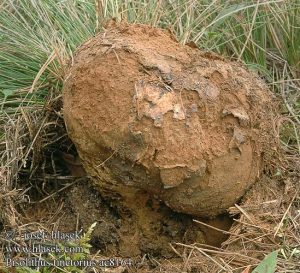The Finnish Institute for Health and Welfare (THL) and the University of Eastern Finland (UEF) are seeking highly motivated applicants for postdoctoral position in epidemiological analyses of microbial exposures and respiratory health. https://www.valtiolle.fi/en-US/Vacancy?id=33-290-2021 The position will focus in characterizing early-life indoor microbial exposures affecting asthma risk. The work comprises two lines of projects where one …
The Senior Chemist – Healthy Home is responsible for development of next-generation technologies for the creation and management of a healthy home environment and microbiome, leveraging BISSELL’s unique position as a developer of both cleaning devices and chemical/natural based formulations. They assist in building department and product strategies, as well as being a liaison to …
Skin-associated bacteria are abundant indoors. A comparison across studies shows that up to 30% of bacterial sequences detected indoors are associated with the human body (see Table 1 in this 2016 paper). I’ve been kind of skeptical that these sequences represented live organisms, however. Rather, I suspected the high proportion of sequences that were human-associated …
How microbial profiles differ between water-damaged and dry buildings is not well known. It’s only logical that where moisture is available indoors, microorganism will grow. Yet, measured microbial products do not show consistent differences between wet and dry homes. Because wet homes are associated with a variety of health risks, it’s important to identify the …
One of the hurdles in linking microbial ecology with building science has been incorporating quantitative information about the microorganisms encountered in indoor environments, mainly because the standard high-throughput amplicon approach for community analysis is semi-quantitative, at best. Over the summer, there was a Twitter conversation related to this topic. My take-away from this (what I view …
In addition to thinking about appropriate statistical analyses given the compositional nature of microbiome data sets (see the previous post here), there is a related but different issue that’s back on my mind – the benefit that quantitative information would bring to research questions. My engineering colleagues in the built environment world have consistently reminded …
As part of the Healthy Buildings 2015 America Conference, there was a technical session on Indoor Microbiome Research where we discussed strategies on, among other things, how to sample and analyze bioaerosols using modern high throughput sequencing techniques. In that workshop, we did a small exercise highlighting the potential for humans to transport microbes into …
The Mycological Society of America’s annual meeting (program) was held at UC Berkeley this year with the theme of “Sequencing the Environment.” The Sloan Foundation sponsored three symposia to 1) highlight ongoing studies of fungi in the built environment and 2) further understanding of the fundamental processes that structure fungal communities, including those of indoor environments. …
We at the Berkeley Indoor Microbial Ecology Research Consortium (BIMERC) are thrilled to have received a renewal grant from the Sloan Foundation to understand the microbial ecology of the built environment as mediated by interactions among organisms, particulate matter, and volatile and non-volatile chemicals. This grant gives us an opportunity to expand on our collaborative work that combines …
Microbiology of the Built Environment research these recent years have explored how humans are a source of microbes and microbial products indoors. To further study the effect of human occupancy on the biological aerosols of indoor space, our research group at Berkeley decided to move from observation studies to controlled experiments to isolate – and quantify – this …
